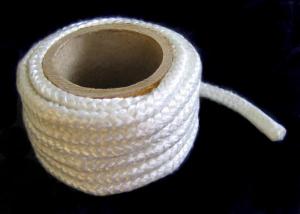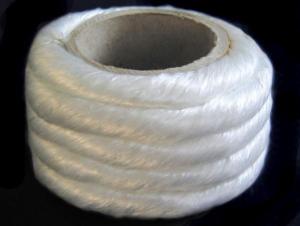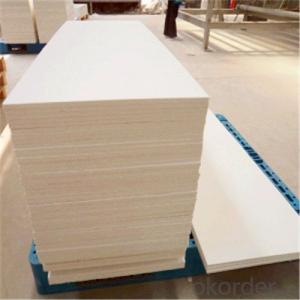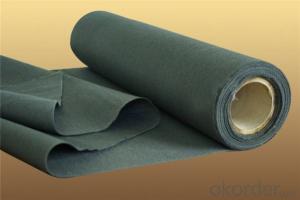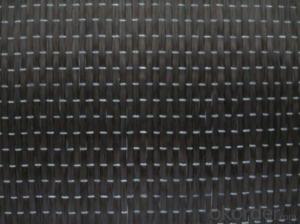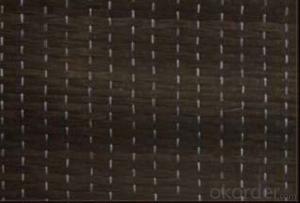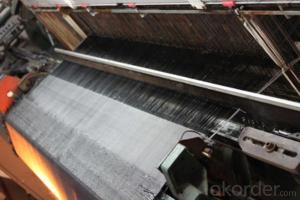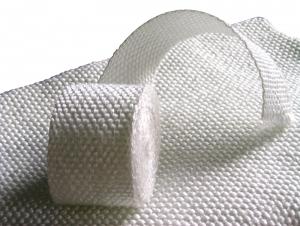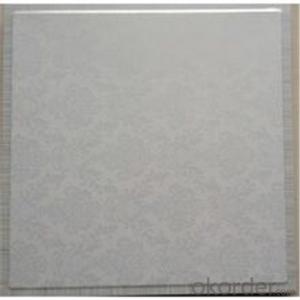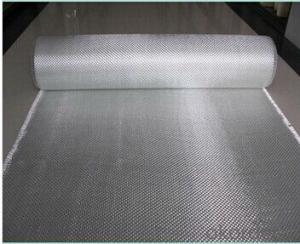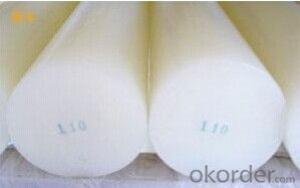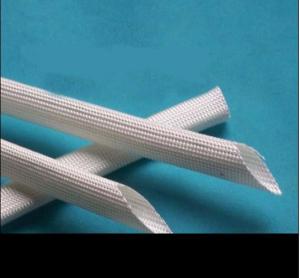Textured Fiberglass Round Braided
- Loading Port:
- China Main Port
- Payment Terms:
- TT or L/C
- Min Order Qty:
- 5t kg
- Supply Capability:
- 2*20FCL Per Month kg/month
OKorder Service Pledge
OKorder Financial Service
You Might Also Like
General info of Textured Fiberglass Round Braided
1. Fire fiberglass rope is made of continuous filament texturized C or E glass yarns and is extremely strong, resilient, and flexible.
2. Fire fiberglass rope are asbestos free, cause no harm to health, making them ideal replacements to asbestos ones.
3. For higher loads, the round braided and square braided ropes can be reinforced by steel wires.
4. Fire fiberglass rope also can be coated with graphite or vermiculite to increase thermal insulation and abrasive resistance.
Fire Fiberglass Rope Application:
1. Fire fiberglass rope are widely used as gasket for industrial ovens and furnaces, boilers and wood burning stoves.
Specifications of Textured Fiberglass Round Braided
1. Fire Fiberglass Rope 2. Round braided or square braided 3. Temperature: 450C-550C 4. Thickness:3mm-100mm


- Q:Can glass fiber textiles be used in the manufacturing of electrical devices?
- Glass fiber textiles, known as fiberglass, have exceptional electrical insulating properties, making them suitable for the manufacturing of electrical devices. With a high dielectric strength, they can endure high voltages without damage, making them a perfect choice for applications that require electrical insulation. In electrical devices, glass fiber textiles can serve as insulation materials in cables, wires, and circuit boards, effectively preventing electrical short circuits and guaranteeing the devices' reliable and efficient operation. Moreover, glass fiber textiles are non-conductive and possess resistance to heat, chemicals, and flames, further augmenting their appropriateness for the manufacturing of electrical devices.
- Q:Can glass fiber textile be used in geotextile applications?
- Yes, glass fiber textile can be used in geotextile applications. Geotextiles are materials that are used in civil engineering projects to improve soil stability, drainage, and filtration. Glass fiber textiles are known for their high strength and durability, making them suitable for geotextile applications. They have excellent resistance to chemicals, moisture, and UV radiation, which are important properties for materials used in geotextile applications. Glass fiber textiles can be used to reinforce soil, prevent erosion, and provide separation and filtration in geotechnical projects such as road construction, embankments, and landfills.
- Q:Can glass fiber textiles be used in the construction industry?
- Yes, glass fiber textiles can be used in the construction industry. Glass fiber textiles are lightweight, flexible, and have high tensile strength, making them suitable for reinforcing materials in concrete, walls, and roofs. They can also be used for thermal insulation, soundproofing, and fireproofing applications in buildings.
- Q:How do glass fiber textiles contribute to noise reduction?
- Glass fiber textiles contribute to noise reduction by absorbing sound waves. The fibrous structure of the textiles traps and dissipates sound energy, preventing it from bouncing off surfaces and creating echoes or reverberations. This helps to create a quieter and more acoustically comfortable environment.
- Q:How do glass fiber textiles affect the moisture absorption or release of fabrics?
- Glass fiber textiles, commonly known as fiberglass, can significantly affect the moisture absorption or release of fabrics. Due to their hydrophobic nature, glass fibers do not readily absorb moisture from the surrounding environment. This property acts as a barrier, preventing the fabric from absorbing moisture and thus reducing its overall moisture absorption capacity. Additionally, glass fiber textiles have a low moisture regain, meaning they do not hold onto moisture for long periods. This characteristic enables the fabric to release any moisture it may have absorbed quickly, allowing it to dry faster compared to fabrics without glass fiber content. Furthermore, the presence of glass fibers in the fabric can enhance its breathability. As glass fibers do not absorb moisture, they create spaces within the fabric structure that promote air circulation. This improved airflow helps in the evaporation of moisture, leading to increased moisture release from the fabric. Overall, the incorporation of glass fiber textiles in fabrics can reduce their moisture absorption capacity, facilitate faster moisture release, and enhance breathability. These characteristics make glass fiber fabrics suitable for applications where moisture management is essential, such as sportswear, outdoor apparel, and moisture-wicking garments.
- Q:The antibacterial effect of bamboo fiber fabric is because it has been added with a kind of assistant, not the yarn of bamboo fiber itself
- But the viscose fiber produced by bamboo is deliberately called "bamboo fiber" by the businessmen, and it no longer has the structure of natural bamboo fiber, so its antibacterial effect will be greatly reduced, or not at all
- Q:How do glass fiber textiles affect light transmission?
- Due to their unique properties, glass fiber textiles have the ability to significantly influence the transmission of light. These textiles consist of transparent glass fibers with a high refractive index, enabling them to efficiently transmit light. When woven together, these fibers form a mesh-like structure that can either enhance or impede the transmission of light, depending on how they are arranged. To enhance light transmission, glass fiber textiles can be designed to be optically clear, allowing light to pass through without obstruction. This makes them suitable for applications such as window screens or fabric used in architectural designs that aim to maximize the penetration of natural light. Additionally, the transparency of glass fibers ensures minimal loss of light intensity, making them ideal for applications where brightness is crucial. On the other hand, glass fiber textiles can also be manipulated to control light transmission for specific purposes. By adjusting the density or pattern of the fibers, these textiles can scatter or diffuse light, reducing glare and creating a more even distribution of light. This characteristic is advantageous in applications such as diffusers used in lighting fixtures or textile displays that require uniform illumination. Moreover, glass fiber textiles can be coated with different materials to further regulate light transmission. For example, applying a reflective coating can transform the fabric into a mirror, reflecting light instead of allowing it to pass through. This can be useful in applications such as privacy screens or optical devices that require redirection of light. In summary, glass fiber textiles can have a significant impact on light transmission, either by facilitating efficient transmission or by altering the light path through scattering or reflection. Their versatile properties make them suitable for a wide range of applications, from enhancing natural light to creating specialized optical effects.
- Q:Can glass fiber textiles be used for making insulation boards or panels?
- Glass fiber textiles, known as fiberglass, possess exceptional insulating properties because of their low thermal conductivity, thus enabling their utilization in the construction field for applications related to thermal insulation. Glass fiber insulation boards or panels are lightweight, long-lasting, and resistant to moisture, making them the perfect choice for insulating walls, roofs, and floors. Moreover, the fiberglass material can be easily molded into various shapes and sizes to accommodate different architectural designs and requirements. Additionally, glass fiber textiles are non-combustible, which enhances their safety aspect. Ultimately, their insulation efficiency, versatility, and durability render glass fiber textiles a favored option for insulation boards or panels.
- Q:How do glass fiber textiles affect the drapability of fabrics?
- Glass fiber textiles, also known as fiberglass textiles, can significantly affect the drapability of fabrics. The addition of glass fibers to a fabric can enhance its stiffness and rigidity, making it less likely to drape naturally. This is because glass fibers have a high tensile strength and are relatively inflexible compared to natural or synthetic fibers commonly used in textiles. When glass fiber textiles are incorporated into fabrics, they create a network of interlocking fibers that add structure and stability to the material. This can be desirable in certain applications where a more rigid fabric is desired, such as in industrial or technical textiles. However, in garments or home furnishings where drape and fluidity are important, the presence of glass fibers can be a disadvantage. The stiffness imparted by glass fiber textiles can restrict the movement and flow of the fabric, leading to a less natural drape. Fabrics with glass fibers may not hang as smoothly or gracefully as those without, and may appear more stiff and rigid when worn or used in drapery. Additionally, the presence of glass fibers can affect the feel and texture of the fabric, making it potentially less comfortable against the skin. It is worth noting that the extent to which glass fiber textiles affect drapability can vary depending on the concentration and distribution of the fibers within the fabric. Higher concentrations of glass fibers or a more densely woven or knitted structure will generally result in a more pronounced impact on drapability. Overall, while glass fiber textiles can offer certain benefits in terms of strength and stability, they can have a negative impact on the drapability of fabrics. It is important for designers and manufacturers to consider the intended application and desired characteristics of a fabric when deciding whether to incorporate glass fibers or opt for other alternatives.
- Q:Can glass fiber textiles be used for filtration?
- Yes, glass fiber textiles can be used for filtration. Glass fibers have excellent filtration properties due to their high surface area and fine pore structure. They are commonly used in various filtration applications, such as air filters, water filters, and industrial filtration systems. Glass fiber textiles can effectively capture and remove particulate matter, dust, and other contaminants from fluids or gases, making them an ideal choice for filtration purposes. Additionally, glass fiber textiles are resistant to high temperatures, chemicals, and microorganisms, further enhancing their suitability for filtration applications.
1. Manufacturer Overview |
|
|---|---|
| Location | Beijing, China |
| Year Established | 1992 |
| Annual Output Value | Above US$ 3 Million |
| Main Markets | North America;Southeast Asia ;Western Europe ;Middle East |
| Company Certifications | ISO 9001:2008 |
2. Manufacturer Certificates |
|
|---|---|
| a) Certification Name | |
| Range | |
| Reference | |
| Validity Period | |
3. Manufacturer Capability |
|
|---|---|
| a)Trade Capacity | |
| Nearest Port | Tianjing |
| Export Percentage | 60% - 70% |
| No.of Employees in Trade Department | 21-50 People |
| Language Spoken: | English; Chinese |
| b)Factory Information | |
| Factory Size: | Above 10,000 square meters |
| No. of Production Lines | Above 8 |
| Contract Manufacturing | |
| Product Price Range | High; Average |
Send your message to us
Textured Fiberglass Round Braided
- Loading Port:
- China Main Port
- Payment Terms:
- TT or L/C
- Min Order Qty:
- 5t kg
- Supply Capability:
- 2*20FCL Per Month kg/month
OKorder Service Pledge
OKorder Financial Service
Similar products
New products
Hot products
Hot Searches
Related keywords
